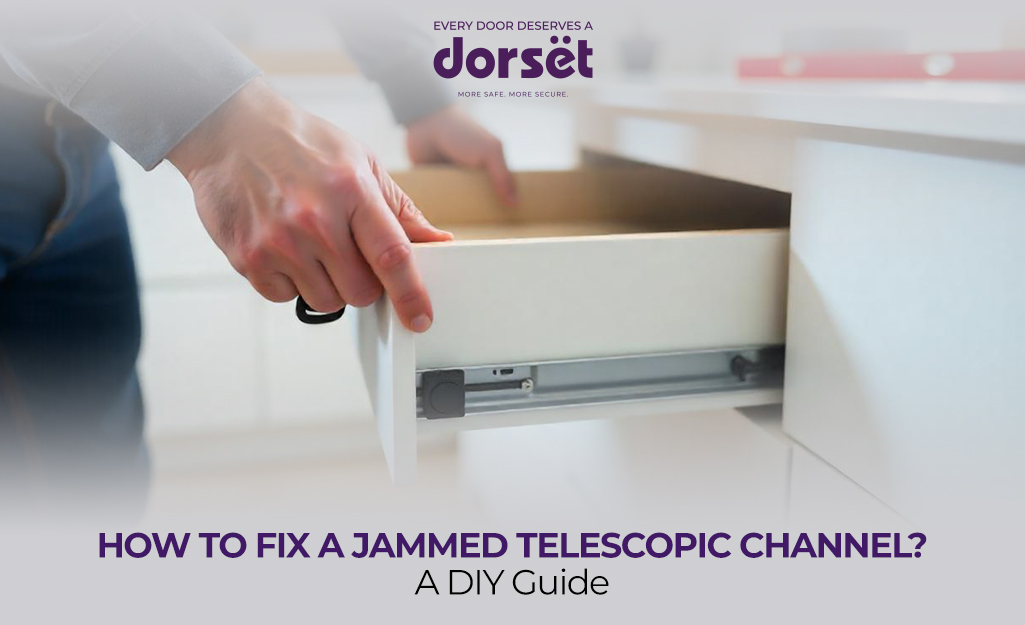
There's nothing more frustrating than trying to open a drawer only to have it stick, grind, or refuse to move altogether. When your telescopic channels jam, it can turn simple tasks like accessing your files or getting your tools into major headaches. The good news is that most jammed telescopic channels can be fixed with basic tools and a bit of patience, often without needing to replace the entire system.
Step 1: Start With a Quick Look
Before taking anything apart, give the jammed channel a good look. Sometimes the issue is simple and easy to spot.
Check for obvious blockages like dust, bent parts, or loose screws. Look along the entire channel. Focus on the ball bearing tracks and sliding surfaces. These are usually where problems start.
Also, see if the drawer is sitting properly in the track. If it’s off even a little, it can feel jammed, but often just needs a simple realignment.
Step 2: Clean Out the Gunk
Dust and tiny debris are some of the biggest reasons channels jam. Over time, dirt collects in the tracks and bearings, making the drawer hard to open.
If you can, remove the drawer using the release levers or buttons (most good channels have them). Use a vacuum cleaner with a narrow nozzle to clear out loose dirt, especially in the ball bearing areas. Then use a soft brush or dry cloth to clean up the rest. Avoid water or cleaning liquids as they can damage the bearings if moisture gets inside.
Step 3: Fix Lubrication Problems
If cleaning doesn’t help, the problem could be dry or sticky lubricant. Telescopic channels need the right kind of lubrication to glide smoothly.
If the old grease looks dirty or sticky, clean it off completely. Use a degreaser if needed, but make sure the area is fully dry before applying fresh lubricant.
Use only light machine oil or proper bearing grease. Avoid heavy or multipurpose oils because they attract dust and can make things worse.
Step 4: Look for Bent or Damaged Parts
If cleaning and oiling didn’t solve it, check for any physical damage. Look closely at the rails. Any dents or bends can stop the drawer from moving smoothly.
Small bends can sometimes be straightened carefully with tools, but badly bent or broken parts usually mean it’s time to replace the channel.
Also check the ball bearing cages. Even small damage here can mess up how the whole thing works. If any of these are broken, replacement is usually the only fix.
Step 5: Check for Misalignment
Sometimes, the issue isn’t damage. It’s just poor alignment. If the channels aren’t straight or level, they can bind and feel stuck even when they’re in good shape.
Use a spirit level to check if the channels are aligned properly. If they’re off, loosen the screws and adjust as needed. Even a small change can make a big difference.
Make sure the drawer fits well and isn't overloaded or tilted, as that can also cause jamming.
Step 6: Check the Load
If your drawer is crammed full, it could be overloading the channel. Every channel has a weight limit, and exceeding it can cause jams or wear them out faster.
Try removing some items and see if it slides better. If that helps, it might be time to lighten the load or upgrade to a channel with higher capacity.
Also, keep in mind that where the weight sits matters. If heavy items are all at the front or back, it can cause uneven pressure and make the drawer bind.
When Should You Replace It?
Sometimes, a jammed channel just won’t cooperate. If cleaning, oiling, and adjusting don’t work or if parts are clearly broken, it’s probably time to replace it. This is especially true if your current channels are old or poorly made. Newer systems slide better, hold more weight, and last longer.
Choosing Quality Replacement Channels
If you do need to replace your telescopic channels, investing in quality components pays off in long-term performance and reliability. Our ball bearing slide systems are engineered for smooth operation and extended service life, with improved soft-close technology that prevents the jamming issues that plague lower-quality alternatives.
Quality telescopic channels like our Ball Bearing Full Extension Soft Close slides incorporate design features that resist jamming, including precision-manufactured ball bearing races, proper load distribution, and materials that maintain their properties over time. The soft close channel also reduces the shock loading that can cause premature wear and jamming in standard channels.
They are available in the 35mm and 46mm profile height options to ensure compatibility with most cabinets whilst providing the load capacity and smooth operation that prevent future jamming problems.
Prevention is Better Than Cure
Once you've restored your telescopic channels to proper operation, regular maintenance can prevent future jamming issues. Clean the channels periodically, apply appropriate lubrication when needed, and avoid overloading beyond the specifications.
Pay attention to early warning signs like increased friction, unusual noises, or slight binding that might indicate developing problems. Addressing these issues early is much easier than dealing with completely jammed channels later.
Most telescopic channel jamming problems can be resolved with basic DIY techniques, but success depends on systematic troubleshooting and using appropriate methods for your specific situation. With proper maintenance and quality drawer channels like the ones from Dorset, your drawers will smoothly operate for years to come.